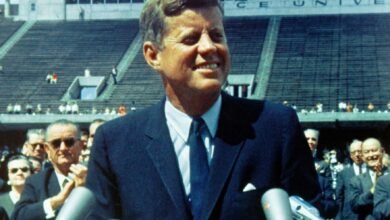Mastering the Art of American Small Talk

Introduction to Small Talk
Small talk is an essential aspect of social interaction, particularly within American culture, serving as a fundamental means for individuals to establish connections. This seemingly casual discourse involves brief conversations that may cover diverse topics, ranging from the weather to current events. Although small talk may appear trivial, its significance in fostering relationships cannot be overstated. It acts as a social lubricant, allowing people to ease into more profound discussions, thus enhancing interpersonal rapport.
In American society, the concept of small talk is deeply embedded. Engaging in small talk often occurs in various settings, such as during casual encounters at work, social gatherings, or even while waiting in line. It serves as an informal means of breaking the ice, paving the way for individuals to learn more about each other. For instance, a simple exchange about recent sports events or local happenings can set the stage for a more meaningful dialogue. In this sense, small talk creates a comfortable environment, encouraging open communication and fostering a sense of belonging.
Additionally, the practice of small talk holds significance beyond mere conversation. It reflects cultural norms and values, demonstrating friendliness and approachability. A well-timed comment about a shared experience, such as a conference, can help individuals feel more at ease, thus reducing potential anxiety in unfamiliar situations. In many American contexts, the ability to engage in small talk is regarded as a valued social skill, pivotal for networking and building professional relationships.
Ultimately, mastering the art of small talk requires practice and awareness of the context in which one is engaging. Through understanding its purpose and significance, individuals can enhance their conversational skills and enrich their social interactions, thereby facilitating deeper connections in their personal and professional lives.
The Importance of Small Talk in Everyday Life
Small talk plays a pivotal role in our daily interactions, serving as a bridge in communication that connects individuals in various settings. Whether at networking events, social gatherings, or casual encounters, the ability to engage in small talk is fundamental to establishing rapport and fostering relationships. In professional environments, small talk can help break the ice, making it easier for participants to engage in more meaningful conversations. With its informal nature, these brief exchanges create a comfortable atmosphere that encourages openness and collaboration.
During networking events, small talk becomes a vital tool for building connections. It often serves as the first step towards establishing trust and camaraderie among participants. By sharing light-hearted conversation or discussing neutral topics, individuals create an initial bond that may lead to more significant professional opportunities. This practice not only enhances one’s communication skills but also helps individuals to navigate the complex social dynamics of formal and informal settings smoothly.
Moreover, small talk is essential in social gatherings, where individuals from diverse backgrounds converge. Here, it acts as a catalyst for deeper conversations. Engaging in brief discussions about shared interests or the atmosphere of the event allows individuals to discover common ground, laying the foundation for lasting friendships. These interactions are significant as they build a sense of community and belonging among participants.
Lastly, in casual encounters, such as interactions with neighbors or acquaintances, small talk enriches daily life and enhances social skills. These brief exchanges contribute to a more connected community and create a harmonious living environment. By nurturing communication through small talk, individuals can cultivate a supportive and engaging social fabric that benefits everyone involved.
Common Topics for Small Talk
Small talk serves as a social lubricant, helping to facilitate interactions and foster relationships. In American culture, there are several popular topics that individuals frequently utilize to initiate conversations. These topics are not only universally relatable but also provide an opportunity for deeper engagement.
One of the most common subjects for small talk is the weather. It serves as a neutral topic that everyone can relate to and can seamlessly transition into more personalized discussions. For instance, comments about unseasonably warm temperatures or an impending storm can lead to conversations about favorite outdoor activities or travel plans. Engaging in weather-related small talk can set a comfortable tone, especially with strangers or acquaintances.
Sports is another favored topic for small talk, particularly in regions with passionate fan bases. Discussing recent games, favorite teams, or player performances can evoke excitement and camaraderie among participants. The shared enthusiasm for local teams during events or playoffs can also connect individuals, making sports a powerful small talk tool.
Current events serve as a vehicle for more substantial conversations. Mentioning trending news stories or popular cultural events can prompt a variety of reactions and opinions, allowing for deeper discussions. However, it is advisable to navigate this topic carefully, as discussions around controversial issues may lead to heated debates rather than friendly exchanges.
Personal interests can also be an effective conversation starter. Asking about hobbies, travel experiences, or favorite books can encourage individuals to share their unique perspectives and build rapport. This not only keeps the conversation engaging but also allows participants to find common ground.
Lastly, incorporating humor can lighten the mood and break the ice. Light-hearted jokes or amusing anecdotes can draw laughter and ease any social tension. Using humor thoughtfully can make interactions more enjoyable and memorable, paving the way for future conversations.
Key Techniques for Successful Small Talk
Engaging in small talk is an essential social skill, particularly in American culture, where conversations often serve as a preliminary bridge to deeper relationships. One of the fundamental techniques for making small talk successful is active listening. This involves not only hearing what the other person is saying but also demonstrating an understanding of their words through verbal affirmations and body language. By nodding in agreement or providing brief, relevant responses, you encourage the speaker to continue sharing and feel valued.
Another effective technique is to ask open-ended questions. Rather than posing questions that can be answered with a simple “yes” or “no,” opt for queries that invite elaboration. For example, instead of asking, “Did you enjoy your trip?”, you might ask, “What was the highlight of your trip?” Such questions not only promote a more engaging dialogue but also allow the other person to express themselves freely, which can lead to more meaningful exchanges.
Body language plays a crucial role in small talk, as it can either reinforce or contradict your spoken words. Maintaining eye contact is key to showing interest and sincerity in the conversation. Additionally, using open body posture—avoiding crossed arms or legs—signals that you are approachable and engaged. Other non-verbal cues, such as mirroring the other person’s gestures, can help establish rapport and foster a comfortable environment for a more relaxed discussion.
Finally, sharing relevant personal anecdotes can serve as a bridge to connect experiences between you and the other person. These stories do not need to be elaborate; even simple, relatable instances can evoke empathy and understanding. Remember, the goal of small talk is to foster connections, and these techniques—active listening, open-ended questions, effective body language, and personal storytelling—can significantly enhance your small talk skills.
Overcoming Small Talk Anxiety
Many individuals experience anxiety when engaging in small talk, primarily due to fears of rejection or the apprehension of running out of conversation topics. These feelings can stem from a lack of confidence in social settings or previous negative experiences. To overcome this anxiety, it is useful to first understand the common sources of such fears. Recognizing that small talk is a skill, rather than an innate talent, can significantly alter one’s perspective and approach. With practice, anyone can learn to navigate social interactions with ease.
One effective strategy to reduce anxiety surrounding small talk is preparation. Before entering a social situation, consider potential topics of conversation that are both engaging and relatable. Current events, shared interests, or even personal anecdotes can serve as excellent conversation starters. Additionally, having a mental list of open-ended questions can facilitate the flow of dialogue, encouraging deeper engagement without the dread of silence. Questions such as “What have you been working on lately?” or “How do you spend your weekends?” invite varied responses and can help maintain a lively discussion.
Another key component in easing small talk anxiety is practicing the mindset of viewing interactions as opportunities rather than risks. Developing a growth mindset allows individuals to embrace the imperfections that often accompany social exchanges. Remind yourself that not every conversation has to be flawlessly executed and that unintentional pauses or awkward moments are entirely normal. Engaging in small talk with friends or in low-pressure environments can also serve as practical rehearsal opportunities. Gradually increasing one’s exposure to diverse social situations builds familiarity, instilling confidence over time.
In overcoming small talk anxiety, it is essential to adopt self-compassion. Acknowledge your feelings, but also recognize that you are not alone in this experience. By employing preparation strategies, practicing conversational skills, and adjusting your mindset, you can transform small talk from a source of anxiety into an enriching component of your social life.
Cultural Nuances in American Small Talk
Small talk in the United States is a rich tapestry woven from diverse cultural influences, regional differences, age groups, and social dynamics that shape conversational styles. Understanding these nuances is essential for effective communication, as small talk often serves as the social lubricant in various interactions, from casual encounters to more formal networking events.
Regionally, small talk can vary significantly across the United States. For instance, in the Northeastern states, conversations may often be more direct and brisk, focusing on personal opinions or current events. In contrast, Southern states tend to emphasize a warmer, more hospitable style of communication, where pleasantries and inquiries about family are commonplace. This regional variance highlights the importance of being culturally adaptable, as adhering to local conversational norms can facilitate smoother interactions and foster a sense of connection.
Age also plays a critical role in shaping small talk styles. Younger generations may gravitate towards technology-related topics or popular culture references, while older individuals might prefer discussing traditional subjects such as family history or community events. Moreover, age differences can often lead to generational gaps in communication preferences, illustrating the need for a flexible approach to small talk across various age groups.
Social dynamics, such as the context of the encounter and the relationship between conversants, further influence how small talk unfolds. For instance, informal settings like social gatherings may encourage more playful banter and casual subjects, while workplace interactions often necessitate a more professional tone. Navigating these dynamics skillfully can enhance the effectiveness of small talk, ultimately leading to stronger interpersonal connections in diverse social settings.
Dos and Don’ts of Small Talk
Engaging in small talk is an essential social skill that can foster connections and ease social interactions, particularly in American culture. To navigate this informal conversation effectively, it is important to adhere to certain dos and don’ts.
First and foremost, one should aim to maintain a positive tone throughout the conversation. This involves using friendly language, smiling, and exhibiting open body language. Positive topics such as recent experiences, shared interests, or common activities can help set a cheerful atmosphere. Additionally, showing genuine interest in the other person by asking open-ended questions can encourage a more engaging dialogue and build rapport.
Conversely, it is advisable to avoid controversial topics during small talk. Subjects such as politics, religion, or personal finances can lead to discomfort and tension, detracting from the intended lightheartedness of small talk. Instead, focus on neutral topics, such as hobbies, travel experiences, or local events that are likely to be relatable to both parties.
Another critical consideration is to be mindful of the other individual’s comfort and responses. Pay attention to their body language and verbal cues; if they seem disinterested or uncomfortable, it may be prudent to change the subject or gracefully exit the conversation. On the flip side, if the other person appears engaged and responsive, it provides an opportunity to delve deeper into the topics being discussed.
Finally, practice active listening throughout the exchange. Acknowledging what the other person says and responding appropriately can enhance communication and demonstrates respect for their perspective. By adhering to these dos and don’ts, individuals can enhance their small talk abilities and foster meaningful interactions in various social settings.
Using Small Talk to Build Connections
Small talk serves as a vital social tool, capable of initiating connections that can lead to deeper relationships. The art of small talk lies not merely in exchanging pleasantries but in effectively using these brief interactions as a gateway to more meaningful conversations. For instance, engaging in light chatter about the weather, current events, or mutual acquaintances can provide an opportunity to establish common ground, which is foundational for building long-lasting connections.
Recognizing cues for deeper engagement is essential in this process. A warm smile, attentive listening, and positive body language can indicate that the other person is open to a deeper conversation. Conversely, abrupt or distracted responses may suggest a disinterest in further dialogue. By being observant and responsive to these non-verbal cues, one can pivot the conversation from small talk toward topics that resonate on a more personal level. Queries about interests, opinions on relevant subjects, or sharing brief anecdotes can facilitate this transition.
Moreover, follow-up interactions play a critical role in nurturing relationships formed through small talk. After an initial meeting, taking the time to reach out, whether through a simple message or an invitation to meet again, can significantly strengthen the connection. This shows genuine interest and invests effort into the budding relationship. Effective follow-up can reinforce conversations, transforming fleeting exchanges into valuable networks that contribute to both personal and professional growth.
In summary, the ability to use small talk effectively can provide a pathway to deeper connections. By transitioning smoothly to meaningful conversations, recognizing engagement cues, and committing to follow-up interactions, individuals can create and sustain impactful relationships that go beyond superficial exchanges.
Conclusion: The Long-Term Benefits of Mastering Small Talk
Mastering the art of small talk is more than just acquiring a skill; it represents a fundamental investment in both personal and professional relationships. The ability to engage in light conversation can serve as a stepping stone to deeper interactions, fostering connections that may lead to meaningful exchanges, collaboration, and even potential opportunities. As individuals become adept at initiating and maintaining small talk, they are likely to notice enhancements in their overall interpersonal skills, which are crucial in various aspects of life.
Moreover, proficient small talkers often find themselves more comfortable in a range of social settings. Whether at professional networking events, social gatherings, or casual encounters in everyday life, being able to navigate small talk can break down barriers, easing interactions and enhancing the comfort level for all parties involved. This ease can result in more substantial conversations, ultimately producing stronger relationships built on trust and familiarity.
From a professional perspective, the significance of mastering small talk cannot be overstated. The corporate world often places a high value on networking, and small talk serves as the precursor to business discussions. Those who can comfortably engage in casual conversation are often seen as approachable and competent, traits that can be beneficial for career advancement. Furthermore, small talk can play a crucial role in creating a positive workplace culture, as it promotes communication and camaraderie among colleagues.
In recognition of the manifold advantages that come with mastering small talk, individuals are encouraged to practice and refine their conversational skills. Engaging in small talk regularly can lead to lasting benefits that enhance one’s social abilities, open doors to new relationships, and improve professional connections. Therefore, embracing this essential art form is not merely beneficial, but rather a vital component of personal and professional development.






















